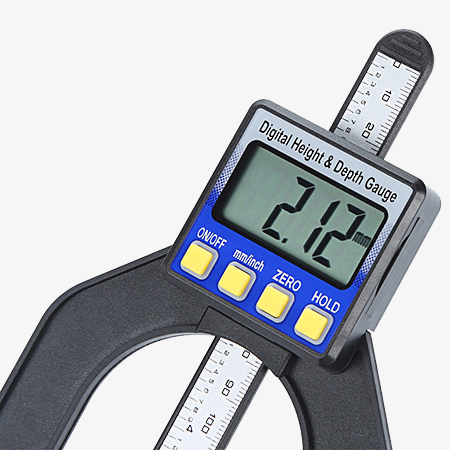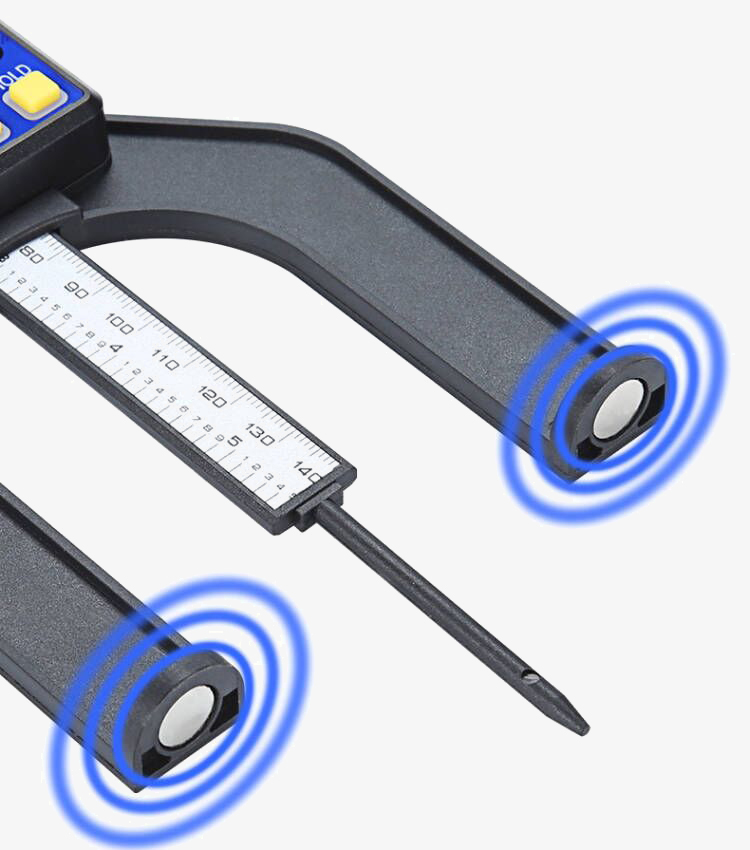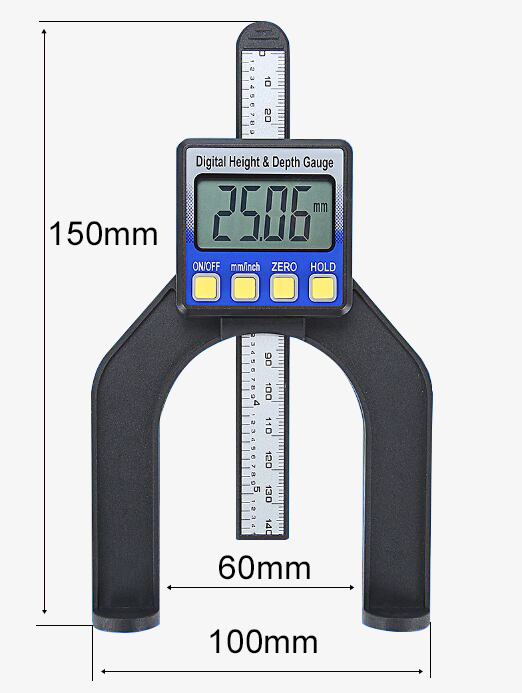High-quality digital vernier height gauge for sale online. The 0-80mm electronic digital height gauge is made from engineering plastic, high strength, wear resistance and durable in use. The LCD on this height gauge measuring tool makes it simple to get accurate readings quickly and easily.

Large screen digital display design
- LCD high-definition LCD screen, the numbers are clear and easy to read
- Comfortable in hand and full of functions

Precise fine-tuning device
- Toggle mechanism for more precise values
- High-definition scale film, dual display in metric and imperial
Applications
SISCO digital height gauges are also called height gauges. As the name suggests, its main purpose is to measure the height of workpieces, and it is also often used to measure shape and position tolerances, and sometimes to mark lines. Digital height gauges are mainly used in the automotive industry, manufacturing, science, and research industries.

- Model: SISCO-DHG-80
- Height Range: 0-80mm
- Depth Range: 0-50mm
- Resolution: 0.01mm
- Error: ±0.03mm
- Battery Type: CR2032 3V lithium battery
- Body Material: Engineering plastics
- Product packaging: Blister packaging
- Weight: 0.6kg
Dimension

Q1: What is a digital height gauge?
A1: A height gauge is one of the most used accuracy and precision tools in different industries. Some of these industries are manufacturing, automobile, metalworking, and healthcare. Typically, they’re used in production stages, such as in cutting and marking raw materials. In some cases, height gauges are utilized in quality control to check if products have met particular standards.
Q2: Is the digital height gauge accurate?
A2: Standard height gauges provide readings accurate to one-hundredth of an inch, but precision-engineered digital height gauges can determine accurate measurements up to the thousandth of an inch and beyond.
Q3: Why do we use digital height gauges?
A3: A digital height gauge is used for measuring the height of objects. Vernier height gauges are used in metrology and metalworking to detect or measure vertical distances. The height gauges are often used to measure a granite surface or scribe part features from a datum plane.
Tips: Advantages of using a digital height gauge
The digital height gauge comes with a digital display, making it easier to read. It’s better than a dial indicator. It can switch units for measurement quickly. Setting the zero quickly is easy. It can collect electronic data. These gauges offer one basic advantage – even lower-end devices also allow you to measure with accuracy. There’s a wide range of gauges, but all come with a built-in measurement indicator and calculation device. From a pneumatic gliding system, lightweightness, durability, and manual/digital interface for adjusting, it comes with a bunch of features. You name the feature, there’s a device that offers it.
Another advantage it offers is the precision you get. The instrument and operator are prone to making errors. But the modern gauge offers a resolution that’s superior. This superiority in devices prevents the potential errors from machines. Once these gauges were made from tough material like cast iron, it means lesser accuracy. However, today lightweight materials are used for building, but they don’t sacrifice accuracy.
Thank you for buying industrial test and measurement equipment on SISCO.com, all products sold by SISCO and the partner cover a 12 months warranty, effective from the date of receiving the products.
What is covered?
SISCO is responsible for providing free spare parts, and free technical support to assist the customer to repair the defective products until the problem is solved.
What is not covered?
- Product purchased from anyone other than a SISCO store or a SISCO authorized reseller.
- Expendable parts.
- Routine cleaning or normal cosmetic and mechanical wear.
- Damage from misuse, abuse or neglect.
- Damage from use of parts other than SISCO approved.
- Damage from use outside the product’s usage or storage parameters.
- Damage from use of parts not sold by SISCO.
- Damage from modification or incorporation into other products.
- Damage from repair or replacement of warranted parts by a service provider other than a SISCO authorized service provider.
- Damage caused by the application environment not meeting the product usage requirements and the failure to perform preventive maintenance.

